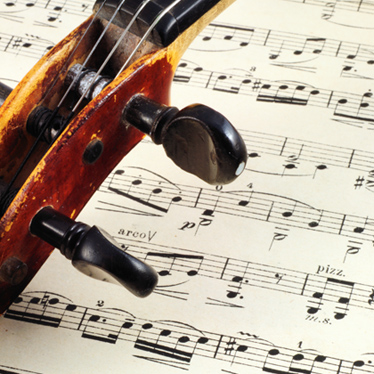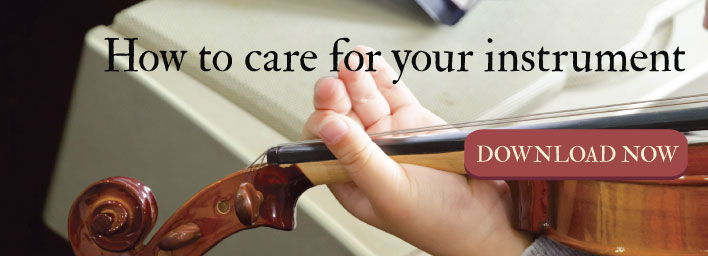Bowing Terms and Symbols

As a beginning string player, your music teacher will initially focus on posture, ergonomic playing techniques (how to hold the bow and violin, the correct angles for wrist-elbow-shoulder, proper neck support, etc.), and basic fingering techniques. Once you’ve gotten the hang of those foundational tenets, it’s time to learn more about music and its terminology.
While note reading is undoubtedly the first step, understanding bowing terms and symbols is a quick second – allowing musicianship to become more nuanced, and better at expressing a composers’ emotional intention.
General musical terms vs. bowing-specific terms
Many of the terms you’ll learn are shared by all musicians – instrumentalists and vocalists alike. These include terms such as:
- Crescendo and decrescendo (to get louder and to get softer)
- Legato and staccato (to smoothly connect the notes, or to play them in shorter, disconnected bursts).
- Allegro and adagio (fast tempo or slower tempo)
Then there are musical terms specific to bowing. Those are the terms and symbols we’re introducing today.
You’ll find bowing terms and symbols written directly onto the sheet music, typically above or below certain notes, measures, or entire musical phrases. However, there are also times when a teacher or conductor verbally indicates where s/he wants you to bow a specific way, in which case you’re expected to grab a pencil and write the correct term/symbol into the sheet music yourself.
Up bowing and down bowing
The first bowing terms and symbols you’ll learn are:
Down bowing ( ∏ ). This indicates the bow should be pulled in a downward direction, from frog to tip.
Up bowing ( ⋁ ). The opposite of down bow strokes are up bow strokes, which move from the tip of the bow to the frog.
Détaché, Legato, and Staccato
Détaché. This is a French term meaning “detached” or “played individually.” In most cases, it’s assumed that the notes you play are détaché unless indicated otherwise. The opposite of détaché is legato.
Legato ().We mentioned above that legato is a universal musical term, meaning “smooth.” Sometimes, the term legato is written in word form. However, there is another way to indicate legato – and that is by creating a single sweeping arc, called a “slur” (like a large parenthesis mark), over or under a series of notes.
This indicates the notes should be connected together via, smooth bow strokes, rather than played separately (détaché). Depending on the length of the series of notes, or the tempo of the song, this may require multiple, long, smooth bow strokes.
Staccato. ( • ) Again, this universal musical term, staccato, is indicated symbolically with a single dot – above or below a note. It indicates the bowing should create intentionally accented, short bursts – rather than the typical détaché – dramatically emphsasizing the notes.
Pizzicato and Arco
Pizzicato ( pizz.) If you’ve ever been to the symphony or listened to “Allegro pizzicato" from Bartók's String Quartet No. 4, you’ve probably seen pizzicato in action. Often written as “pizz.” on the music, it’s technically not a bowing term. It instructs the player to pluck, rather than bow, the note(s). We’re including it here because any section of music that is indicated as “pizz,” will be followed by another bowing term: arco.
Arco (arco). Arco simply means to bow the notes. So, you won’t typically find it written on your sheet music unless you’ve been instructed to play pizzicato. The term arco appears above the measure, or notes, where you cease plucking, and return to bowing again.
Ready for more advanced bow terms and symbols?
If you’ve already mastered these common bowing terms and symbols, we recommend reading, Different Bowing Techniques For the Serious Violinist. That post provides insight into more advanced bowing terms and symbols. You can also visit the Vienna Symphony Library’s page on violin notation, which is an excellent resource for serious string musicians.
Learning these universal terms, abbreviations, and symbols will advance your sight-reading and playing ability. Plus, it also works in reverse – providing a shorthand you can use when conductors quickly shout out changes or additions to the musical scores your orchestra is practicing. Your advanced understanding and independent ability to correctly put that notation to use makes a positive impression, setting you apart from less astute musicians.
You may want to check out our selection of violin & viola bows if you enjoyed this article on Bowing Terms and Symbols.


